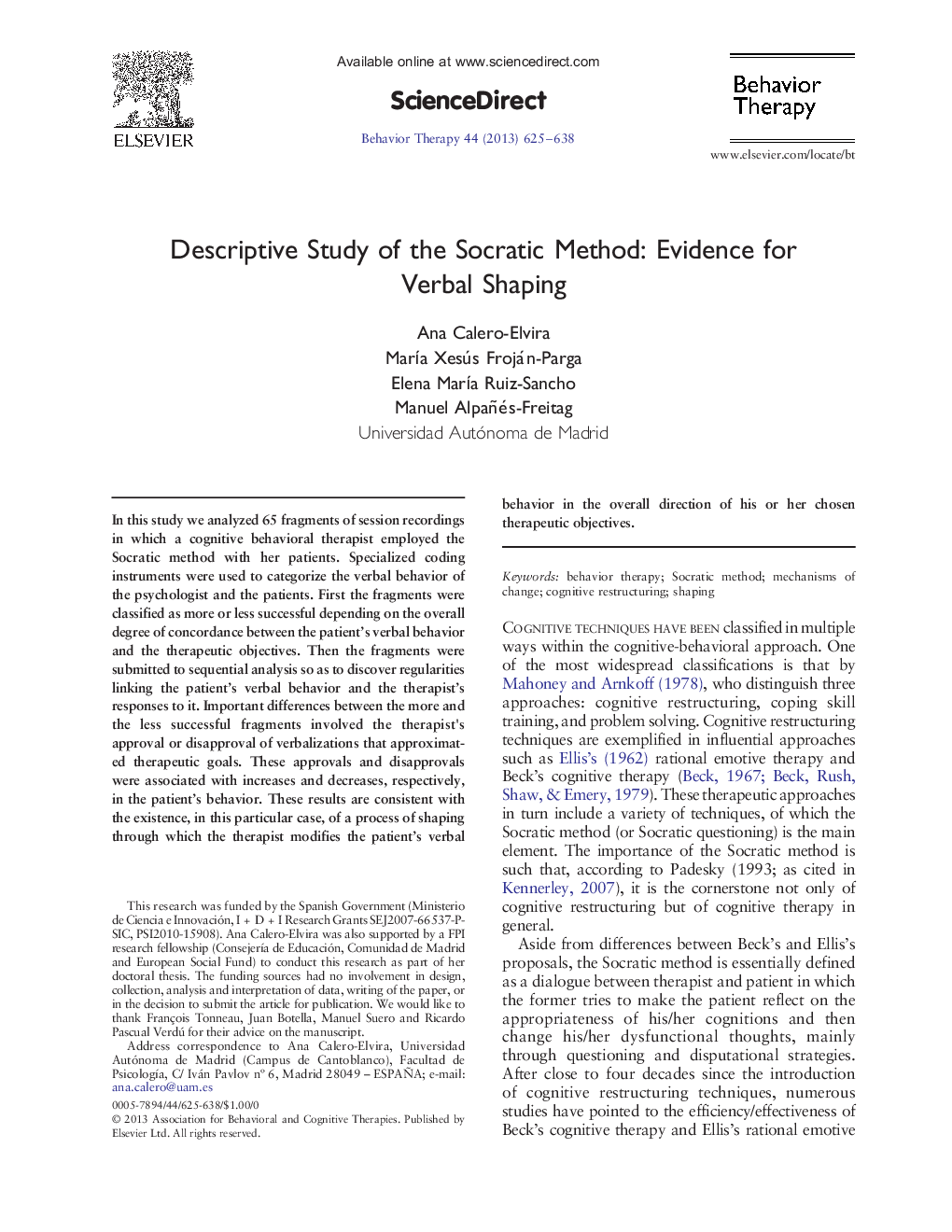| Article ID | Journal | Published Year | Pages | File Type |
|---|---|---|---|---|
| 901384 | Behavior Therapy | 2013 | 14 Pages |
•We examine mechanisms that explain changes in patients during the Socratic method.•We analyzed therapist-patient interaction in 65 fragments of clinical sessions.•Sequential analysis was used to study behavioral sequences.•Results suggest that the application of this component may involve verbal shaping.
In this study we analyzed 65 fragments of session recordings in which a cognitive behavioral therapist employed the Socratic method with her patients. Specialized coding instruments were used to categorize the verbal behavior of the psychologist and the patients. First the fragments were classified as more or less successful depending on the overall degree of concordance between the patient’s verbal behavior and the therapeutic objectives. Then the fragments were submitted to sequential analysis so as to discover regularities linking the patient’s verbal behavior and the therapist’s responses to it. Important differences between the more and the less successful fragments involved the therapist's approval or disapproval of verbalizations that approximated therapeutic goals. These approvals and disapprovals were associated with increases and decreases, respectively, in the patient’s behavior. These results are consistent with the existence, in this particular case, of a process of shaping through which the therapist modifies the patient’s verbal behavior in the overall direction of his or her chosen therapeutic objectives.
